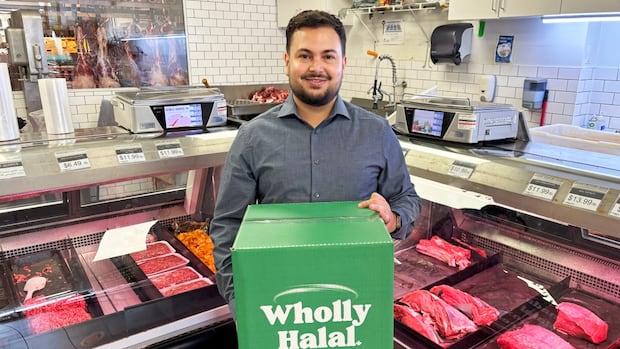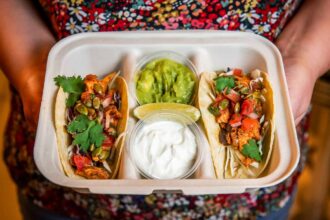In a world of mass-produced convenience, there’s something deeply satisfying about opening a box filled with carefully selected local foods that tell the story of a particular place. Across Canada, a growing movement of food subscription services is connecting consumers directly with local producers, offering a taste of regional specialties without leaving home.
The concept is simple but profound: curated boxes of locally sourced food items delivered regularly to subscribers’ doorsteps. But the impact extends far beyond convenience – these subscription services are reshaping our relationship with food and community.
Take Kitchener-Waterloo’s Smile Tiger Coffee, for instance. What began as a neighborhood coffee roastery has expanded its offerings to include subscription boxes featuring their signature roasts alongside locally produced goods. Their boxes showcase the region’s diverse food landscape, from artisanal breads to small-batch preserves, creating what amounts to a portable taste of southwestern Ontario.
“These boxes aren’t just about the food,” explains Sarah Chen, a food systems researcher at the University of Guelph. “They’re about creating connections between urban consumers and the agricultural communities that surround them. Each product comes with a story and a face behind it.”
The appeal transcends mere convenience. In Montreal, subscription service Panier Québécois delivers boxes featuring exclusively Quebec-made products – from maple-infused delicacies to artisanal cheeses like the increasingly popular Tomme varieties. Subscribers report that beyond discovering new products, they value the cultural education that comes with each delivery.
“I’ve lived in Quebec for fifteen years, but I’m still discovering local specialties through my monthly box,” says Laurent Dubois, a Montreal resident and loyal subscriber. “Last month I discovered a spruce tip jam that I would never have picked up in a store. Now I’m obsessed.”
What distinguishes these services from ordinary online shopping is the curation aspect. Experts select complementary items, often building boxes around seasonal availability or thematic connections. Many services include recipe cards suggesting how to use unfamiliar ingredients, transforming the box from a collection of products into a culinary adventure.
The pandemic accelerated this trend dramatically. When COVID-19 restricted movement, subscription box services saw unprecedented growth as consumers sought both safety and connection. Many of these businesses began as pandemic pivots by restaurateurs and food retailers seeking new revenue streams when traditional operations were curtailed.
Mom’s Pie and Bread in rural Ontario transformed from a small bakery into a subscription service delivering their famous pies alongside products from neighboring farms. Three years later, they’ve maintained that customer base even as in-person shopping has resumed.
“People discovered they actually prefer this model,” notes food economist Dr. Harjinder Singh. “It eliminates decision fatigue while still providing variety. Plus, there’s the anticipation factor – subscribers look forward to discovering what’s in this month’s box.”
The environmental impact is substantial as well. By focusing on local producers, these services dramatically reduce food miles compared to conventional grocery shopping. Many employ reusable packaging systems, with subscribers returning containers for refilling. Wholly Halal, a subscription service specializing in halal-certified local products, uses exclusively compostable packaging for their monthly boxes.
Economic data suggests these subscription services create meaningful impact for small producers. A 2023 survey by the Canadian Federation of Independent Business found that food producers who partner with subscription services reported an average 23% increase in revenue and significantly improved cash flow due to the predictable nature of subscription orders.
For consumers, the subscription model offers a structured way to support local economies while discovering new favorites. “I’ve completely changed how I cook,” says Toronto subscriber Amara Williams. “Before my subscription, I was in a cooking rut. Now I work with whatever arrives in my monthly box, and it’s made me a more creative and adventurous cook.”
Critics note that the subscription model isn’t perfect – pricing can put these boxes out of reach for many households, potentially limiting their community impact. However, several services have introduced sliding scale pricing or community-supported options to address accessibility concerns.
As these services mature, many are adding customization options while maintaining their core focus on local discovery. Subscribers can now often indicate preferences or dietary restrictions while still receiving curated selections.
What began as a niche offering has evolved into a significant alternative food distribution system, one that privileges relationship and place. For many Canadians, these boxes represent not just convenience but a tangible connection to the lands and people producing their food – delivered right to their doorstep.
The next time you’re looking to discover what makes Canadian food unique, consider that the answer might arrive in a box, carefully packed with the flavors of a community you’ve yet to explore.
This article was originally published in CO24 Culture and is part of our ongoing series on emerging CO24 Trends in Canadian food systems.























